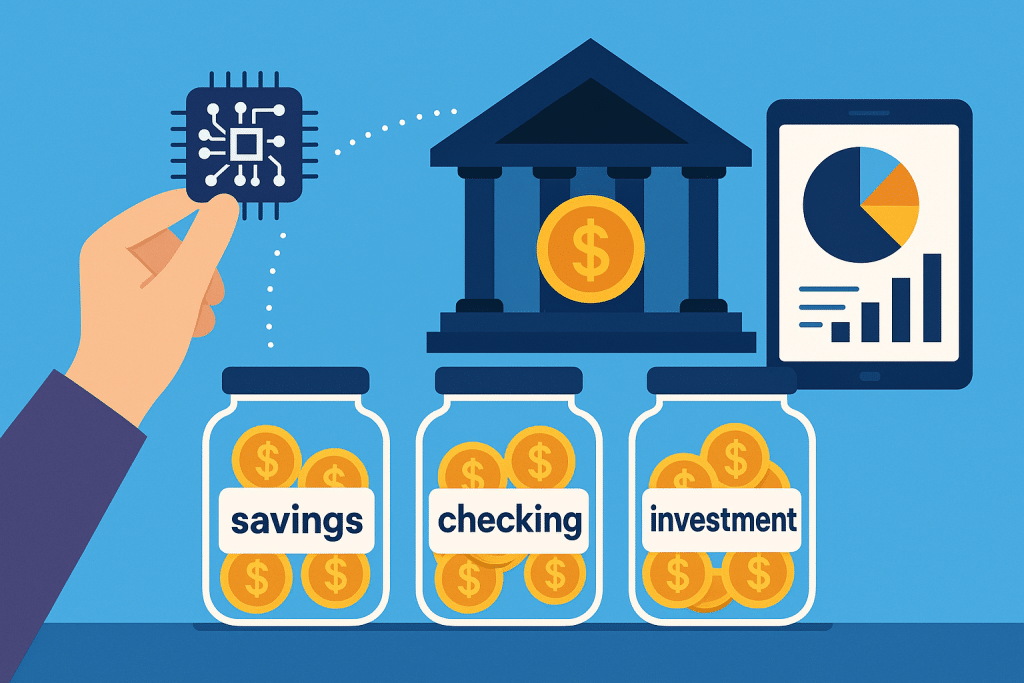The Pitfall of a Single Checking Account
Most people manage their finances through one checking account — their paycheck is deposited there, bills are paid from it, and everyday spending happens in the same place. While this “one-pot” approach seems convenient, it creates confusion and risk. It’s easy to lose track of what portion of your balance is actually available after accounting for rent, loan payments, or savings goals. You might check your balance, feel confident, and make a purchase — only to realize later that the money was meant for upcoming bills. This reactive pattern often leads to stress and financial disorganization. To fix it, you first need a clear foundation — your financial baseline.
Step 1: Establish Your Financial Baseline — Know Where You Stand
Before you can organize your accounts effectively, you need a complete picture of your current finances. Your baseline isn’t a strict budget — it’s a realistic snapshot of your income and spending habits.
Start by tracking your monthly inflows and outflows. Categorize your spending into essentials like housing, utilities, groceries, transportation, debt payments, entertainment, and subscriptions. From there, separate your expenses into three groups: needs, wants, and savings goals.
Once you understand your average monthly spending, you can determine your baseline — the amount required to sustain your lifestyle and meet goals. This knowledge is essential before creating a new system. A well-defined baseline gives you clarity and control, helping you build a structure that supports your financial goals instead of restricting them.
Step 2: Adopt the Multiple-Account System — The Cornerstone of Financial Clarity
A proven way to simplify money management is to use multiple bank accounts, each with a specific purpose. This “bucket” or “envelope” system divides your money according to its job, giving every dollar a destination.
A typical setup includes one main checking account for incoming funds and several savings or sub-accounts for specific goals. This structure brings psychological clarity — you’ll always know exactly how much is reserved for bills, vacations, or emergencies.
Step 3: How to Structure Your Accounts
1. Primary Checking Account (Income Hub)
This is your main account — your paycheck lands here. From this hub, money is distributed to your other accounts either manually or automatically. Keep only a modest balance here for small or unexpected expenses. The goal is to prevent the illusion that your entire paycheck is available to spend.
2. Bills Account (Fixed Expenses)
Create a dedicated account for recurring payments such as rent, mortgage, insurance, utilities, and subscriptions. After identifying your fixed monthly costs, transfer that amount from your primary checking to this account each payday. Paying bills from this account ensures you never spend money earmarked for essentials.
3. Everyday Spending Account (Variable Expenses)
This checking account covers flexible, everyday costs like groceries, fuel, coffee, and transportation. After determining your average monthly spending, transfer that amount here. Use a debit card linked to this account — when the balance runs low, it’s a built-in signal to pause non-essential spending until the next cycle.
4. Emergency Fund (Safety Net)
This savings account is your financial cushion for unexpected hardships such as job loss, medical expenses, or car repairs. Keep it in a high-yield savings account that’s easy to access but separate enough to discourage impulsive withdrawals. Aim for 3–6 months of living expenses.
5. Goal-Based Savings (Future Fund)
Modern banks often let you create multiple savings “vaults” or sub-accounts for free. Use them to save for specific goals — a vacation, a new car, or a home down payment. This visual separation helps you track progress and stay motivated.
Depending on your lifestyle, you might have five to seven accounts total, covering all major areas of your financial landscape.
Step 4: Automate Your System — Let Technology Work for You
The key to maintaining your system is automation. Instead of manually transferring funds after every paycheck, schedule automatic transfers from your primary checking account to your other accounts. This “pay yourself first” approach ensures your savings and bills are funded before discretionary spending begins. With automation, your financial structure runs smoothly with minimal effort, keeping you consistent and disciplined.
Step 5: Advanced Strategies for Landlords and Freelancers
If you manage rental properties or freelance income, separate your business and personal finances. Open a dedicated business checking account for all income and expenses related to your work. Then, add specialized savings accounts such as:
- Tax Reserve Account: Set aside money for quarterly tax payments.
- Maintenance or Repair Fund: Cover property or equipment upkeep.
- Growth or Upgrade Account: Save for business improvements or new tools.
This separation simplifies bookkeeping and makes tax preparation far less stressful.
Conclusion: From Chaos to Control
Learning to organize your bank accounts is one of the most empowering financial habits you can build. It shifts you from a reactive mindset to proactive financial control. By setting a clear baseline, assigning every dollar a purpose, and automating transfers, you’ll create a system that quietly manages your money in the background.
The benefits are long-term and profound — fewer overdrafts, less stress, faster progress toward your goals, and greater financial confidence. Investing time to build this system today sets the foundation for a stable and prosperous financial future.
